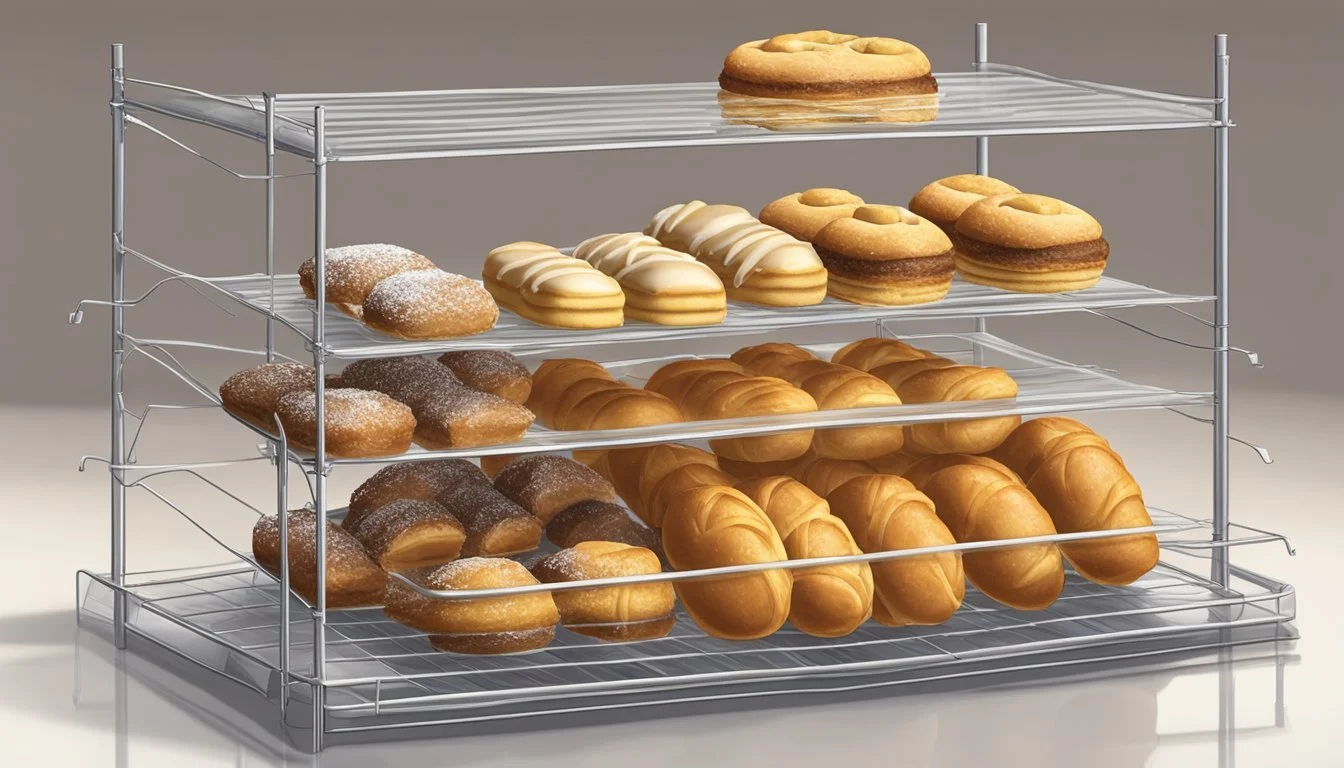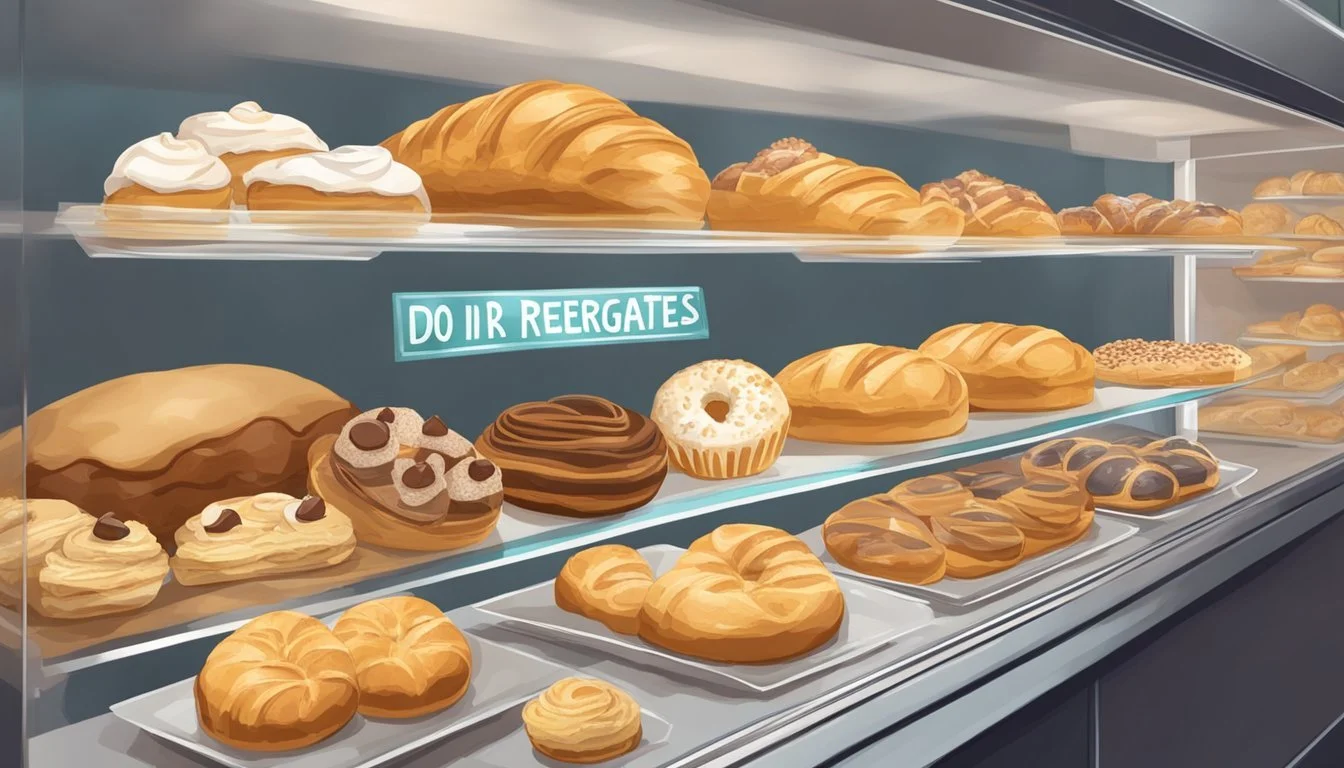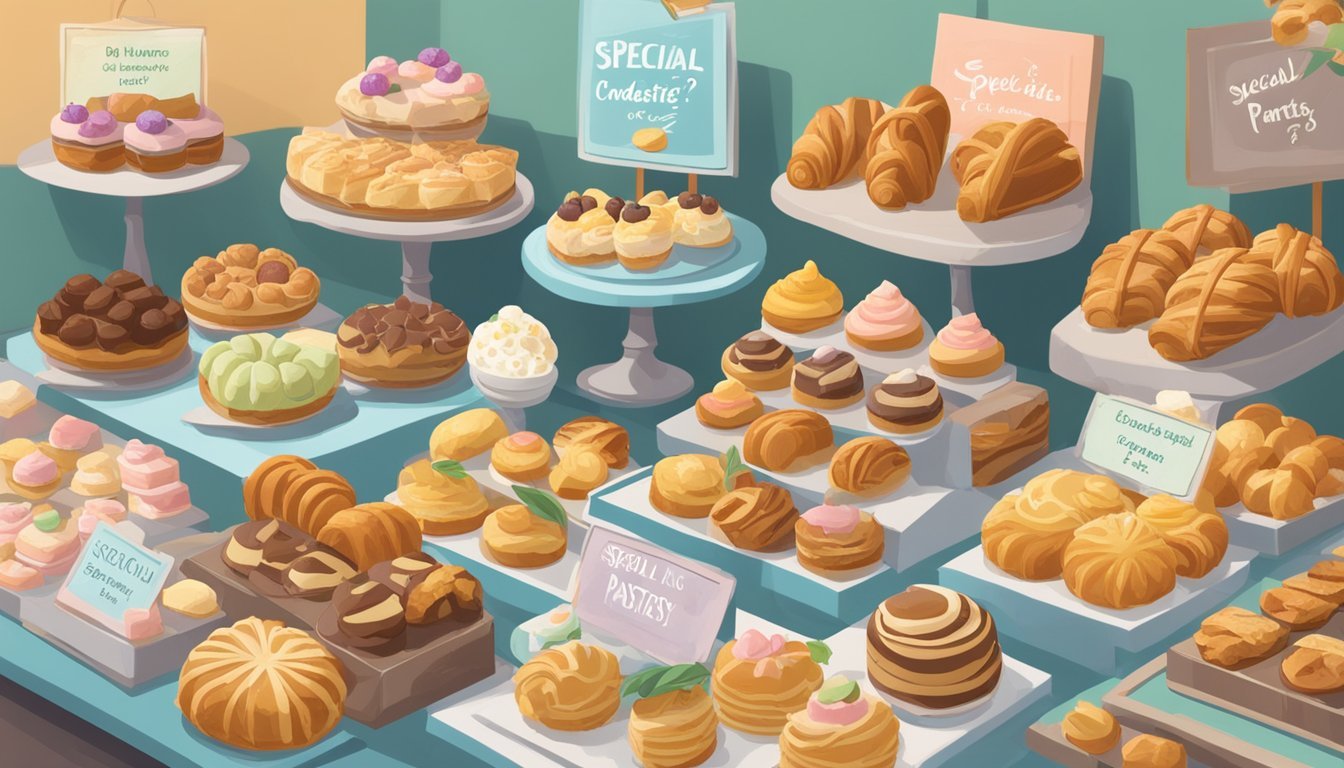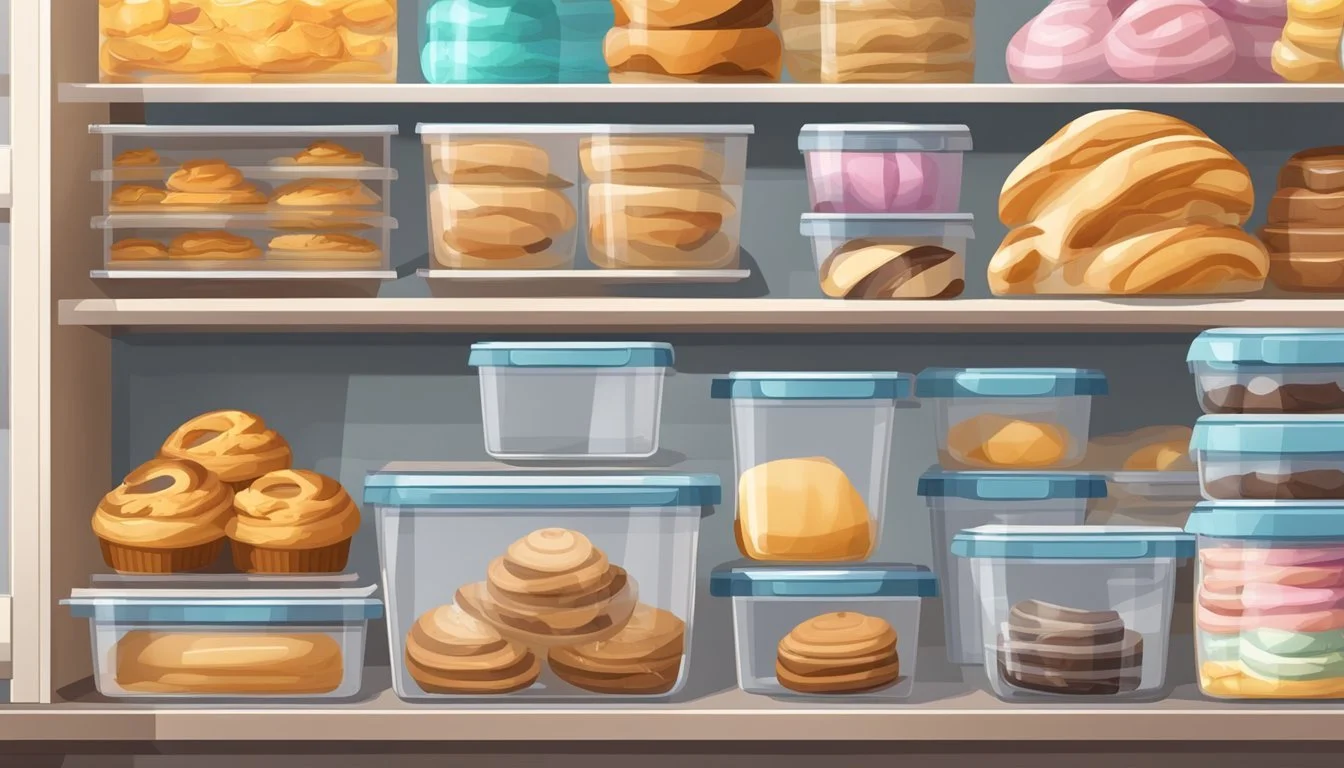Do I Have to Refrigerate Pastries?
Understanding Storage Essentials
When it comes to storing pastries, there are various methods to ensure they retain their freshness and flavor. Whether or not to refrigerate them depends on the type of pastry and the length of time one intends to keep them. Pastries with dairy-based fillings such as cream or custard need to be stored in the refrigerator immediately to prevent spoilage. For other types, a pantry or countertop might suffice, provided the environment is cool and dry.
The longevity of a pastry's freshness is closely linked to its storage conditions. Refrigeration can help prolong freshness but may also lead to a dry texture. It's recommended to use airtight containers or wraps to mitigate this drying effect when opting for refrigeration. If one plans to keep pastries for more than a couple of days, the freezer becomes the preferred option. In the freezer, encased in proper airtight packaging, pastries can maintain their quality for up to three months.
It is essential to recognize that the storage method not only affects the freshness but also the textural integrity of the pastry. For instance, leaving pastries out in moist or warm environments can hasten staling or promote bacterial growth. Therefore, it's crucial to balance the need for maintaining moisture with the risk of spoilage when deciding on storage solutions.
Understanding Pastries and Storage
The longevity and quality of pastries hinge on correct storage. It ensures the pastry's texture, taste, and freshness remain at their best, while also preventing the development of bacteria that could cause spoilage.
Types of Pastries
Pastries can vary widely, requiring different storage methods:
Cream or custard-filled pastries should be refrigerated at temperatures between 35°F and 40°F to preserve freshness. They should also be stored in airtight containers to maintain moisture and prevent them from absorbing odors.
Dairy-free pastries, such as croissants or danishes, often remain fresh at room temperature for a short period if kept in paper bags or bread boxes. These typically last a couple of days without drying out.
Factors Affecting Pastry Freshness
Several key factors influence how long pastries remain fresh:
Temperature: Pastries should be kept at a consistent temperature. Fluctuations can negatively affect both taste and texture.
Moisture: Moisture control is crucial. Too much moisture can lead to sogginess and promote bacterial growth, whereas too little moisture can cause pastries to become dry and stale.
Airtight Storage: Using airtight containers or wrapping pastries tightly in plastic wrap can prevent them from drying out too quickly and also protect them from odors and taste contamination from other foods.
By understanding and carefully managing these factors, the window in which pastries can be enjoyed at peak freshness is maximized.
Refrigeration of Pastries
When it comes to preserving the freshness and extending the lifespan of pastries, refrigeration plays a critical role. However, the decision to refrigerate pastries also comes with certain trade-offs that must be considered.
Benefits of Refrigerating Pastries
Preservation of Freshness: Refrigerating pastries slows down the growth of bacteria and mold, which can spoil them. By keeping pastries cool, their shelf life can be extended effectively.
Moisture Retention for Certain Types: Pastries with creamy or custard fillings benefit from refrigeration as it helps maintain their moist texture and prevents spoilage. Items such as eclairs or fruit tarts should be kept in the fridge to keep them safe for consumption.
Drawbacks of Refrigeration
Potential Drying Out: The fridge's dry environment can cause pastries to lose moisture, leading to a stale texture. Pastries, especially those that are unfilled or unglazed, are susceptible to this drying effect.
Absorption of Odors: If not stored properly in airtight containers, refrigerated pastries might absorb odors from other foods present in the fridge, which can alter their intended flavors.
By understanding these benefits and drawbacks, consumers can make informed decisions on whether to refrigerate their pastries.
Freezing Pastries for Longevity
Freezing is an effective method to extend the shelf life of pastries while preserving their flavor and texture. Proper preparation before freezing and appropriate thawing and reheating techniques are essential to maintain the quality of frozen pastries.
Preparing Pastries for the Freezer
Pastries should be fully cooled before freezing to prevent condensation and ice crystal formation, which could affect their texture. Steps to prepare pastries for freezing:
Wrap Pastries Individually: Use plastic wrap or aluminum foil to wrap each pastry tightly, ensuring minimal exposure to air.
Use Freezer-Safe Containers: Place the wrapped pastries into airtight containers or freezer bags to protect them from freezer burn and odor absorption.
Labeling: Clearly label the container with the type of pastry and the date of freezing for easy identification and to track how long they have been stored.
Thawing and Reheating Frozen Pastries
Thawing and reheating are crucial stages in enjoying your frozen pastries. How to properly thaw and reheat:
Thawing: Transfer the frozen pastries to the refrigerator and allow them to thaw overnight. For quick thawing, pastries can be left at room temperature for a few hours.
Reheating: To restore the pastry's texture, reheat them in an oven preheated to 350°F (175°C) for a few minutes. If pastries have a high moisture content or creamy fillings, lower temperatures are recommended to avoid sogginess.
Storing Pastries at Room Temperature
Proper storage is crucial for maintaining the freshness and quality of pastries when keeping them at room temperature. The counter can be a suitable place, provided that the pastries are properly shielded from air and environmental factors that can degrade their quality.
When to Store Pastries on the Counter
Pastries are best stored on the counter when they lack dairy or egg-based fillings and frostings that require refrigeration for food safety. Typically, items such as breads, muffins, scones, and cookies can remain fresh at room temperature for up to two days. The key is to ensure that they are not exposed to direct sunlight or sources of heat, which can accelerate staling and the degradation of texture and flavor.
Containers and Wrapping Techniques
Effective shielding of pastries from excess air and humidity is essential. Here are specific techniques:
Containers: An airtight container can significantly prolong the life of pastries on the counter. A container with a tight-fitting lid is ideal for items like cookies and muffins.
Wrapping: For items that are more delicate or oddly shaped, plastic wrap or aluminum foil provides a snugger fit and helps preserve the moisture content. They should be wrapped individually or in small batches to prevent them from drying out.
In both cases, the goal is to minimize air flow and moisture loss without trapping excess moisture that could make the pastries soggy.
Maintaining Optimal Freshness
To ensure pastries remain fresh, they need to be protected from air, moisture, and temperature changes. Adhering to tried-and-true storage practices is essential.
Proper Airtight Storage
Securing pastries in airtight containers is crucial. For pastries that are not cream-filled or custard-based, one can wrap them in plastic wrap or place them in airtight containers. This method significantly reduces exposure to air, preserving the moisture and structural integrity of the pastry. A properly sealed plastic bag can also serve as an alternative to contain freshness for these types of baked goods.
Room Temperature: Perfect for short-term storage (up to 2 days).
Refrigerator: Ideal for extending freshness up to 3-4 days, particularly necessary for pastries with cream or custard fillings.
Freezer: Suitable for long-term storage, effectively keeps pastries fresh for several months.
Moisture Control and Preservation
Managing moisture and humidity is pivotal in maintaining the freshness of pastries. To prevent them from drying out, one must ensure the environment is not overly dry or humid. In refrigerated settings, proper moisture control can be achieved with the right temperature settings, typically between 35°F and 40°F (1.7°C to 4.4°C).
Desiccants: Can be used within storage containers to absorb excess moisture.
Paper Towels: Lining the bottom of the container with a paper towel helps in absorbing any additional moisture.
By following these guidelines, one can confidently extend the palatability and freshness of various pastries.
Shelf Life and Consumption Guidelines
When it comes to pastries, understanding their shelf life and the best practices for consumption is crucial to maintain their quality and minimize health risks. Here's what you need to know to enjoy your treats safely and at their best.
Deciphering the Shelf Life
The shelf life of pastries varies significantly depending on their ingredients and storage conditions. Refrigeration is often recommended, especially for pastries with cream or custard fillings, which are more prone to spoilage. Typically:
Pastries with fresh fillings or dairy have a shelf life of about 3-4 days in the fridge.
Baked goods without fillings can last up to a week if refrigerated correctly.
These periods ensure that not only does the pastry remain edible but also retains its intended texture and flavor.
Guidelines for Consumption
To consume pastries while they are still of high quality, certain guidelines should be followed:
Store them in an airtight container to prevent drying out and to protect against absorbing unintended flavors from other foods in the refrigerator.
Keep the refrigerator temperature between 35°F and 40°F to best preserve freshness.
Consume refrigerated pastries within the suggested time frames to minimize health risks associated with spoilage.
Following these guidelines will help ensure that pastries are enjoyed in their best state without compromising food safety.
Special Considerations for Specific Pastries
When storing pastries, understanding the unique requirements of different types is crucial for maintaining quality and taste.
Cakes, Cupcakes, and Frostings
Cakes and cupcakes typically keep well at room temperature for several days, provided they are covered to prevent drying out. However, if they contain perishable frostings made with cream cheese, whipped cream, or custard, refrigeration is necessary to prevent spoilage. The refrigerator should be set between 35°F and 40°F. In such cases, cakes and cupcakes can last in the fridge for up to four days. To maintain moisture, store them in airtight containers.
Pies and Tarts
Pies and tarts possess different storage needs depending on their fillings. Fruit pies can usually remain at room temperature for a day or two but should be covered loosely with foil or plastic wrap. For longer storage up to five days, refrigerate in an airtight container. Cream or custard-based pies and tarts must be refrigerated immediately after cooling and consumed within two to three days.
Cookies, Brownies, and Bars
Cookies, brownies, and bars are generally more forgiving. They can stay fresh at room temperature for about a week when kept in an airtight container, separating layers with parchment paper to prevent sticking. Refrigeration is not typically necessary unless the environment is very warm or humid, but doing so can extend their shelf life up to two weeks. For brownies and bars with a high moist content, refrigeration can prevent mold growth and maintain quality.
Dealing with Leftovers and Excess
When handling leftovers and excess pastries, the primary goals are to prevent waste and maintain freshness. The following strategies offer practical ways to manage surplus baked goods effectively.
Reusing and Repurposing Baked Goods
Leftover pastries can be repurposed to give them a second life. Stale bread can be transformed into croutons for salads or breadcrumbs for coating. Day-old muffins and croissants can be revitalized by lightly toasting them or used as a base for dessert recipes like bread pudding. It's essential to store pastries in an airtight container and consume them within 3-4 days when refrigerated to ensure the best quality and safety.
Sharing and Donating Options
For those with excess pastries that will not be consumed in time, sharing is an admirable choice. Offering these baked goods to colleagues, friends, or family can spread joy and reduce waste. Communities often have food banks or shelters that accept donations of surplus food items. Ensure the pastries are still within a safe consumption window and are packaged to maintain freshness when donating.
Bakery vs. Homemade Pastries
When comparing bakery-bought and homemade pastries, there are distinct storage and freshness evaluation methods that should be considered. One's choice between the two may affect not just taste and quality but also how they should be stored and for how long.
Storage Differences
Bakery Pastries:
Typically have a shelf-life of 1-2 days when left at room temperature.
Refrigeration can extend freshness for 3-4 days, provided they are stored properly to prevent drying out.
Homemade Pastries:
Should be stored in an airtight container to maintain moisture.
They often lack preservatives, which means room temperature storage is suitable for a short duration of only up to 2 days.
Evaluating Quality and Freshness
Bakery Pastries:
The texture and taste may start deteriorating after a couple of days, even when refrigerated.
Quality can be judged by absence of mold and a lack of stale smell.
Homemade Pastries:
Freshness is indicated by a crisp texture or moist crumb, depending on the type of pastry.
Signs of freshness include a pleasant aroma and no discoloration.
Advanced Storage Techniques
In the realm of pastry preservation, advanced storage techniques like vacuum sealing and the use of innovative packaging materials play crucial roles in extending freshness and maintaining quality.
Vacuum Sealing for Extended Freshness
Vacuum sealing is a process that involves the removal of air from a package before it’s sealed. This method significantly reduces the oxidation process and limits the growth of bacteria and mold. Vacuum sealers can be a wise investment for those looking to:
Extend Shelf Life: Pastries can last longer because the absence of air slows down the deterioration process.
Preserve Quality: By preventing freezer burn, vacuum sealing ensures the taste and texture of pastries are maintained.
Innovative Packaging Materials
The selection of packaging materials is just as critical as the sealing process. Innovative materials are designed to provide benefits that include:
Moisture Control: Specific materials help regulate the moisture level, reducing the risk of sogginess or drying out.
Temperature Resistance: Materials that withstand a range of temperatures are ideal for pastries that might move from freezer to fridge to room temperature.
Choosing the right material could involve options like:
Biodegradable and eco-friendly options, which offer quality storage while being environmentally conscious.
Packaging with built-in freshness technology, such as oxygen absorbers or moisture barriers, to extend the life of baked goods.
Using advanced storage techniques ensures that pastries retain their optimum flavor, texture, and freshness for an extended period.











